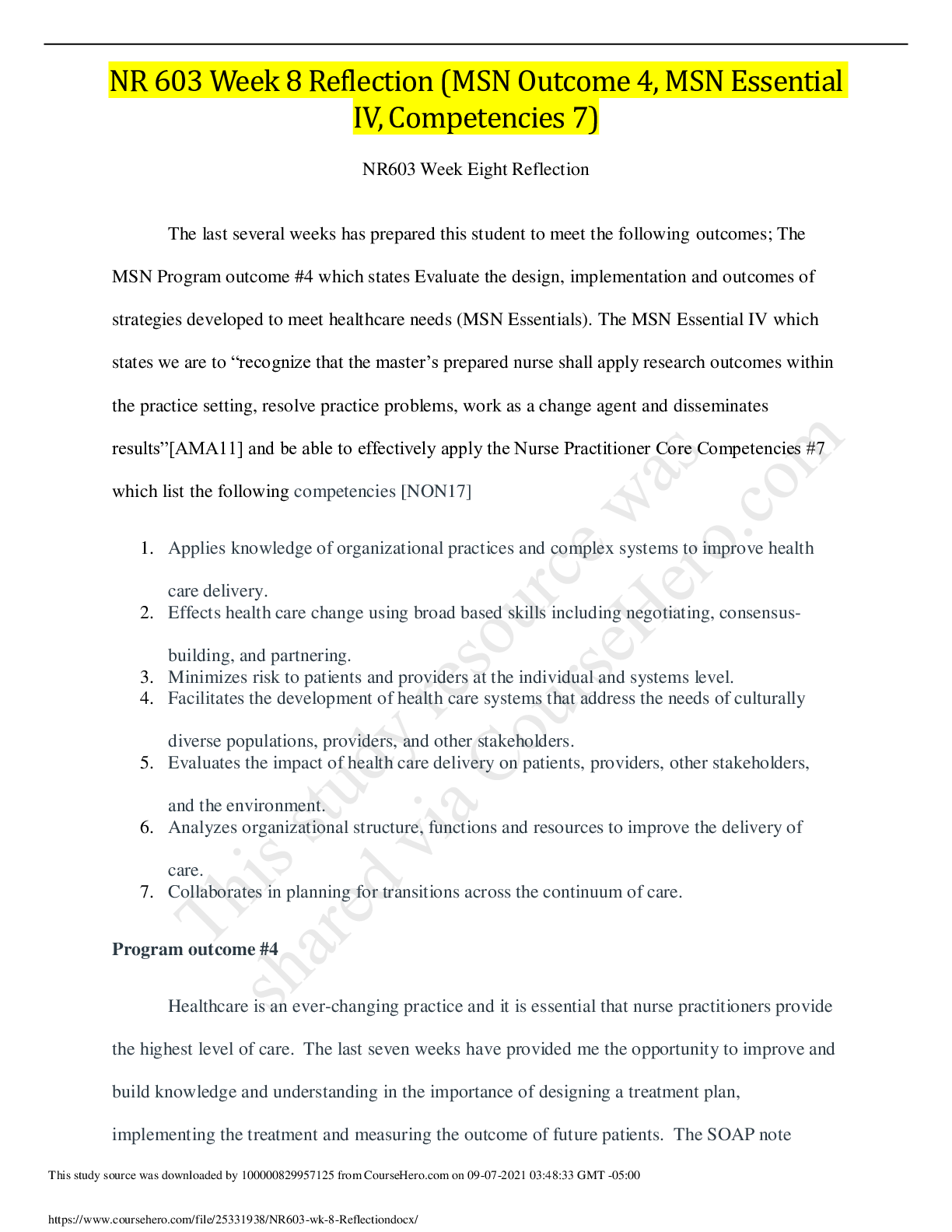*NURSING > CASE STUDY > Chamberlain College of Nursing - NR 603 Week 3 Case Discussion: Cardiovascular_100% Correct. (All)
Chamberlain College of Nursing - NR 603 Week 3 Case Discussion: Cardiovascular_100% Correct.
Document Content and Description Below
What Leads Demonstrate the ST Depression? Leads V4, V5 and V6 demonstrate the ST depression. Maximal precordial ST-segment depression in leads V4-V6 is suggestive of severe coronary artery disease i... nvolving the left anterior descending coronary artery or its diagonal branch, in patients with inferior wall acute myocardial infarction (Shemirani, & Nayeri-Torshizi, 2015). Is Lorene Hypertensive per ACA 2017 Guidelines? Compare the ACA guidelines to JNC 8 guidelines and discuss what treatment you recommend for her BP and why. ACA 2017 Guidelines Lorene’s BP of 146/90 indicates that she is hypertensive according to ACA 2017 guidelines. Rubenfire (2018), states that according to ACA guidelines, a blood pressure reading of systolic 140 mm Hg and above and diastolic reading of 90 mm Hg is consider as hypertension stage 2. Prior to labeling a person with hypertension, it is important to use an average based on two or more readings obtained on two occasions to estimate the individual’s level of BP. Two first-line drugs of different classes are recommended with stage 2 hypertension. For African American population, first-line treatment recommendations are thiazide diuretics and calcium-channel blockers (Williams, et al., 2016). JNC 8 guidelines According to the JNC 8 guidelines, Lorene’s BP of 146/90 is consider as hypertensive. Armstrong (2014), states that adults 60 years and older, should have treatment initiated when the systolic pressure is 150 mm Hg or higher, or when the diastolic pressure is 90 mm Hg or higher and patients should be treated to a target systolic pressure of less than 150 mm Hg and a target diastolic pressure of less than 90 mm Hg. First-line treatment are diuretics or calcium channel blockers are recommended for monotherapy in blacks (Williams, et al., 2016). What is the Primary diagnosis causing Lorene's chest pain? Include ICD 10 codes Acute Coronary Syndrome (I24.9). Acute coronary syndrome (ACS) refers to a group of clinical syndromes that are associated with sudden, reduced blood flow to the heart. Symptoms include pain radiating from the chest to the shoulders, arms, upper abdomen, back, neck or jaw, palpitations, shortness of breath, diaphoresis, nausea, lightheadedness, generalized weakness, and decreased exercise tolerance (Avital, & Oji, 2018). Acute coronary syndrome can be diagnose by completing Troponin levels and an electrocardiogram can be completed to measure the heart’s electrical activity (Avital, & Oji, 2018). In the case of Lorene, she was having shortness of breath while in dance class. She also felt "a discomfort" that radiated back and up between her shoulder blades while at the peak of her exercise routine and was a little nauseous and sweaty. Her EKG results show ST depression in multiple leads which indicates NSTEMI. Lorene also has the following risk factors associated with acute coronary syndrome according to Avital, & Oji (2018), she is above 55-years of age, has history hypertension, dyslipidemia, gestational diabetes, is overweight, smoke occasionally and drinks beer and wine. This study source was downloaded by 100000831988016 from CourseHero.com on 04-18-2022 07:55:13 GMT -05:00 https://www.coursehero.com/file/42382909/Week-3-assignment-finaldocx/ What other secondary diagnoses does Lorene have that should be addressed? Diabetes Mellitus Type 2 (E11.9). Diabetes mellitus, occurs when there is impairment of, beta cell synthesis or release of insulin, or the inability of tissues to use insulin which results in the inability to metabolism of fat, carbohydrate and protein. Clinically the patient will present with symptoms of increased fatigue, polyuria, polydipsia, and polyphagia (Carrera-Boada, & Martínez-Moreno, 2013). Lorene is overweight despite her efforts to exercise two times a week, her hgbA1C results is 6.4% and fasting glucose 135mgs/dl. She also has history of gestational diabetes with three pregnancies. According to Pippitt, and Marlana, (2016), diagnosis of diabetes can be made with an A1C level of 6.5% or greater, a fasting plasma glucose level of 126 mg /dl. Although this patient’s A1C results is 6.4% which is consider pre-diabetes, however she has a fasting glucose 135mgs/dl and history of gestational diabetes with three pregnancies which means she has type 2 diabetes. Type 2 diabetes when left uncontrolled, it affect major organs including the heart, blood vessels, nerves, eyes and kidneys cause serious complications for the patient (Carrera-Boada, & Martínez-Moreno, 2013). Hyperlipidemia, (E78.5). Hyperlipidemia develops as a result of abnormal lipoprotein metabolism, mainly lowering of low-density lipoprotein (LDL) receptor expression or activity, and consequently reducing hepatic LDL clearance from the plasma (Buttaro, et, al., 2013). An individual can develop hyperlipidemia form hereditary or unhealthy eating, and lack of excises. There are usually no symptoms manifested by the patient with hyperlipidemia. The only way for a healthcare provider to detect hyperlipidemia is to perform a blood test or assess a patient who presents with a cardiovascular event, such as a heart attack or stroke (Buttaro, et, al., 2013). Risk factor for Lorene having hyperlipidemia include her age, her diagnosis of diabetes and being overweight. Her cholesterol levels are elevated with, total cholesterol 230 mg/dl, LDL 180 mg/dl; HDL 38mg/dl, Triglycerides 180mgs/dl. Hyperlipidemia is caused by excessive fat accumulate in the blood over time, forming plaques on the walls of the arteries and blood vessels. The plaques narrows the walls of the arteries and blood vessels making it hard for the heart to pump blood through putting this patient at risk for a heart attack or stroke (Buttaro, et, al., 2013). Design a treatment plan and discuss how each intervention is applicable to Lorene's case Referrals/Follow up Lorene’s EKG results and her symptoms indicates a cardiac ischemia. Cardiac ischemia is a medical emergency and time to start treatment is critical (Switaj, Christensen, & Brewer, 2017). In the case of Lorene, I will call 911 and transfer her to the emergency department. While she is on her way to the emergency department will call the emergency department and give report of my findings to the provider at the emergency department so they can plan on providing adequate care in a timely manner for this patient. When patient is discharged from hospital I will schedule follow-up in one week and continue to monitor patient every three months to manage her hypertension, hyperlipidemia and diabetes to prevent any more cardiac events. Refer to This study source was downloaded by 100000831988016 from CourseHero.com on 04-18-2022 07:55:13 GMT -05:00 https://www.coursehero.com/file/42382909/Week-3-assignment-finaldocx/ registered dietician, diabetic educator, podiatrist, and ophthalmologist (Switaj, Christensen, & Brewer, 2017). Diagnostic tests As soon as this patient arrives the emergency department, a 12-lead electrocardiography should be completed to find out if electrocardiographic findings may reflect myocardial ischemia changes in the PR segment, QRS complex, and the ST segment. Also obtaining cardiac biomarkers that include troponin I or T is crucial. Coronary CT angiography can also be completed to rule out myocardial ischemia (Switaj, Christensen, & Brewer, 2017). Medications 1). RX: Hydrochlorothiazide 12.5 mg oral tablet, Take 1 tablet by mouth daily. Dispense # 30. Refill 2 2). RX: Amlodipine 5 mg oral tablet, Take 1 tablet by mouth daily. Dispense # 30. Refill 2 Rationale: Two first-line drugs of different classes are recommended with stage 2 hypertension. For African American population, first-line treatment recommendations are thiazide diuretics and calcium-channel blockers (Williams, et al., 2016). 3). RX: Metformin ER 500mg tablets, Take 1 tablet by mouth twice daily. Dispense #60. Refill 2 Rationale: According to America Diabetic Association (2018). Metformin is the medication to be prescribed for patients newly diagnosed patients with type 2 diabetes before trying other drugs Metformin has possible benefit of weight loss with reduce high blood sugar levels. Ensure patient is screen and monitor for Vitamin B12 levels when taking Metformin 4). RX: Atorvastatin 10mg, Take 1 tab daily. Dispense #30. Refill 2 Rationale: According to America Diabetic A [Show More]
Last updated: 1 year ago
Preview 1 out of 5 pages

Reviews( 0 )
Document information
Connected school, study & course
About the document
Uploaded On
Apr 18, 2022
Number of pages
5
Written in
Additional information
This document has been written for:
Uploaded
Apr 18, 2022
Downloads
0
Views
78


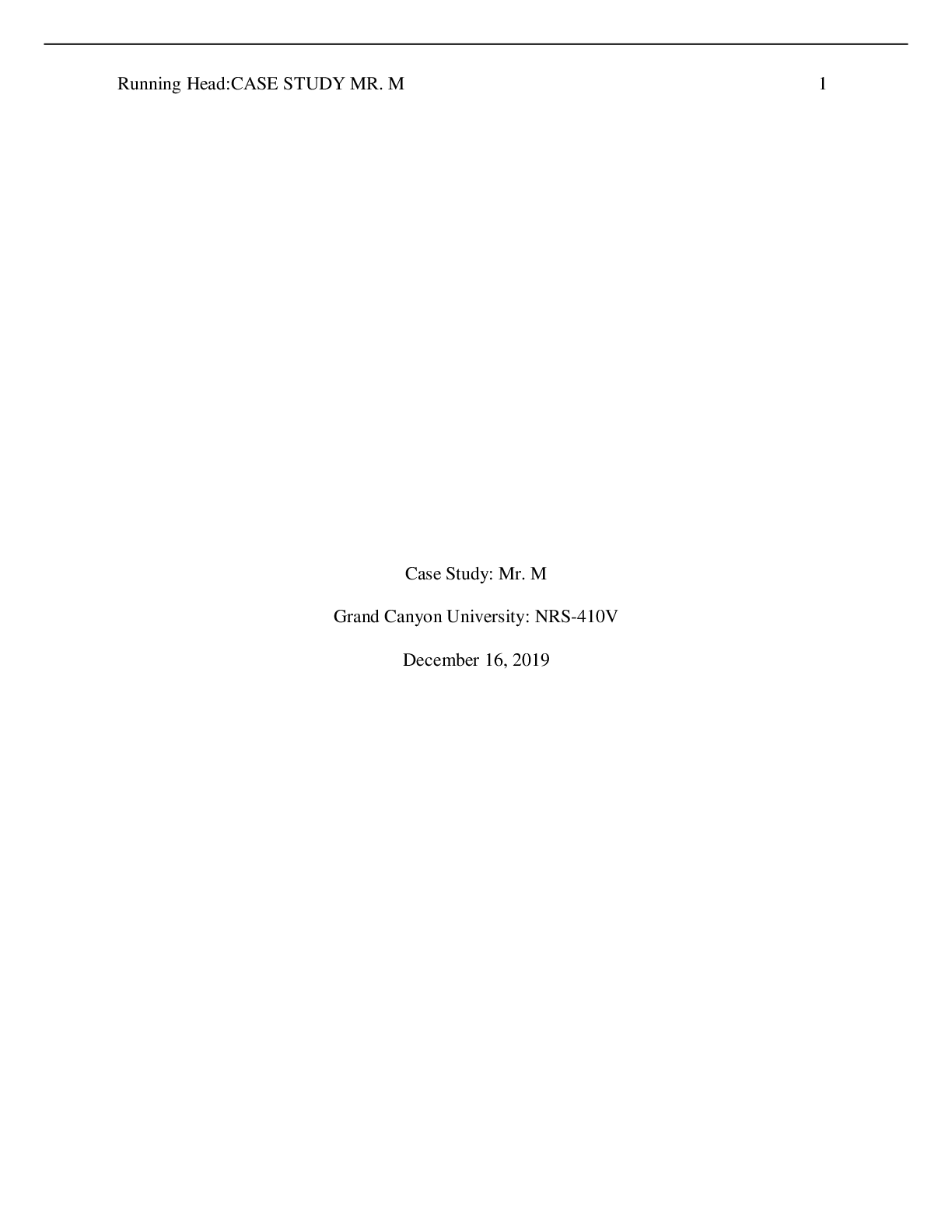



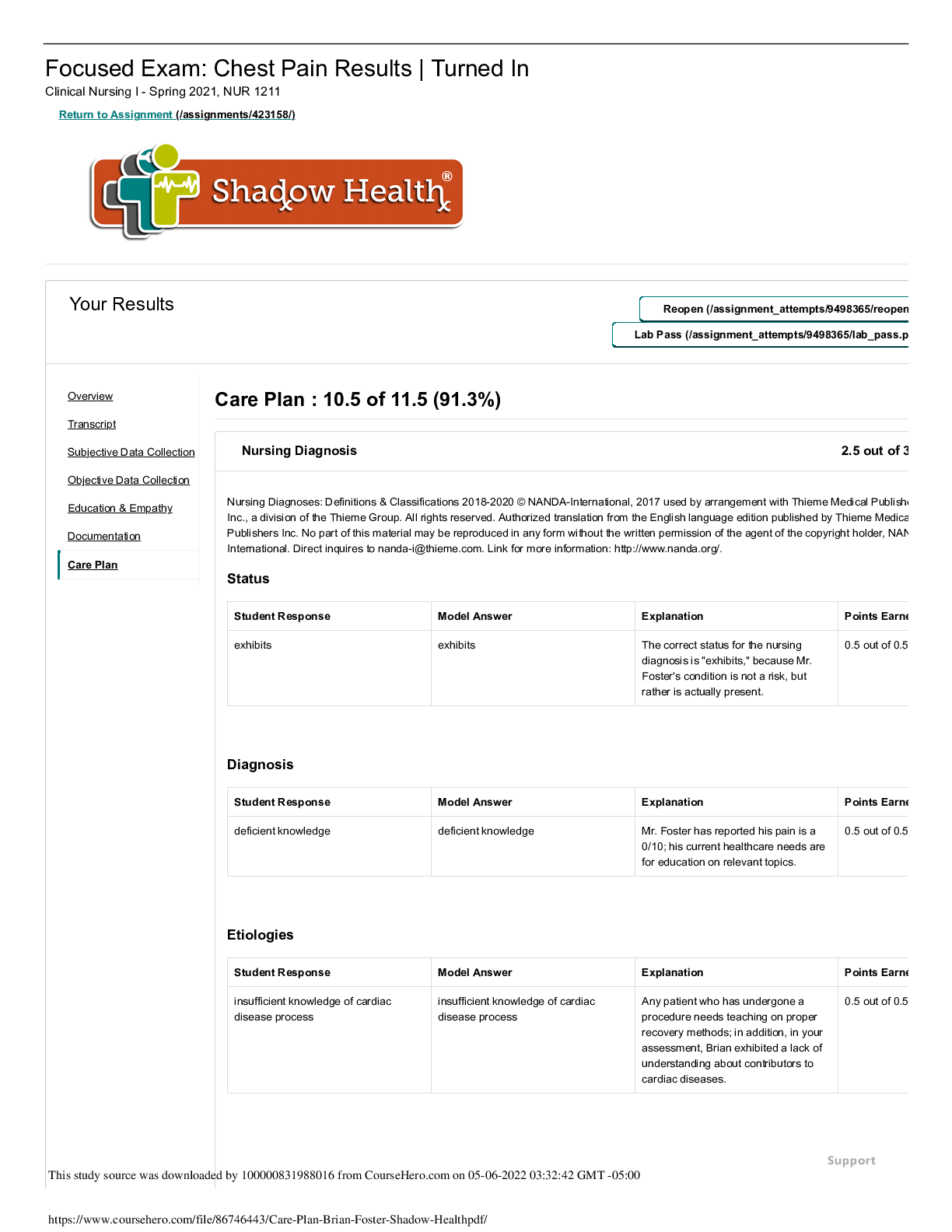
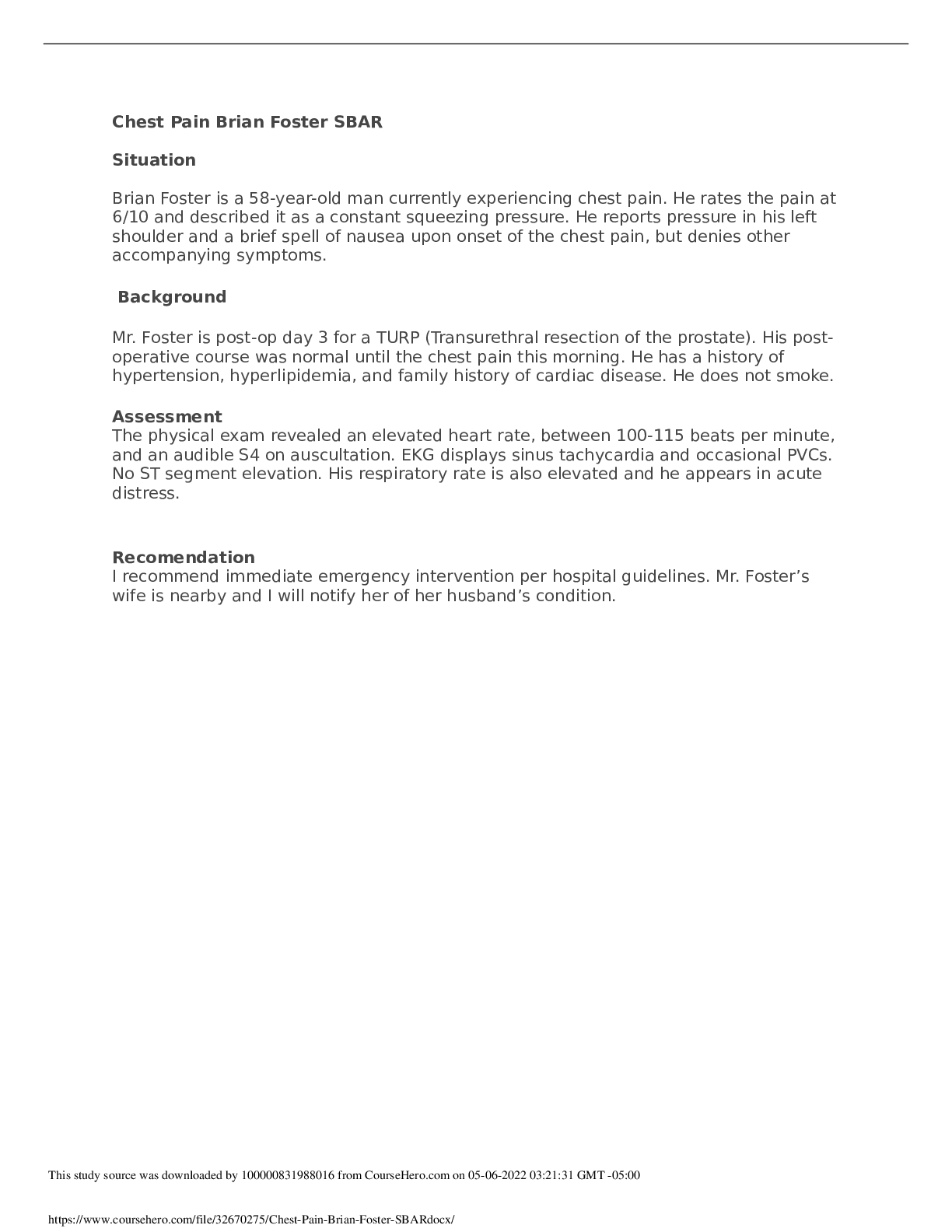
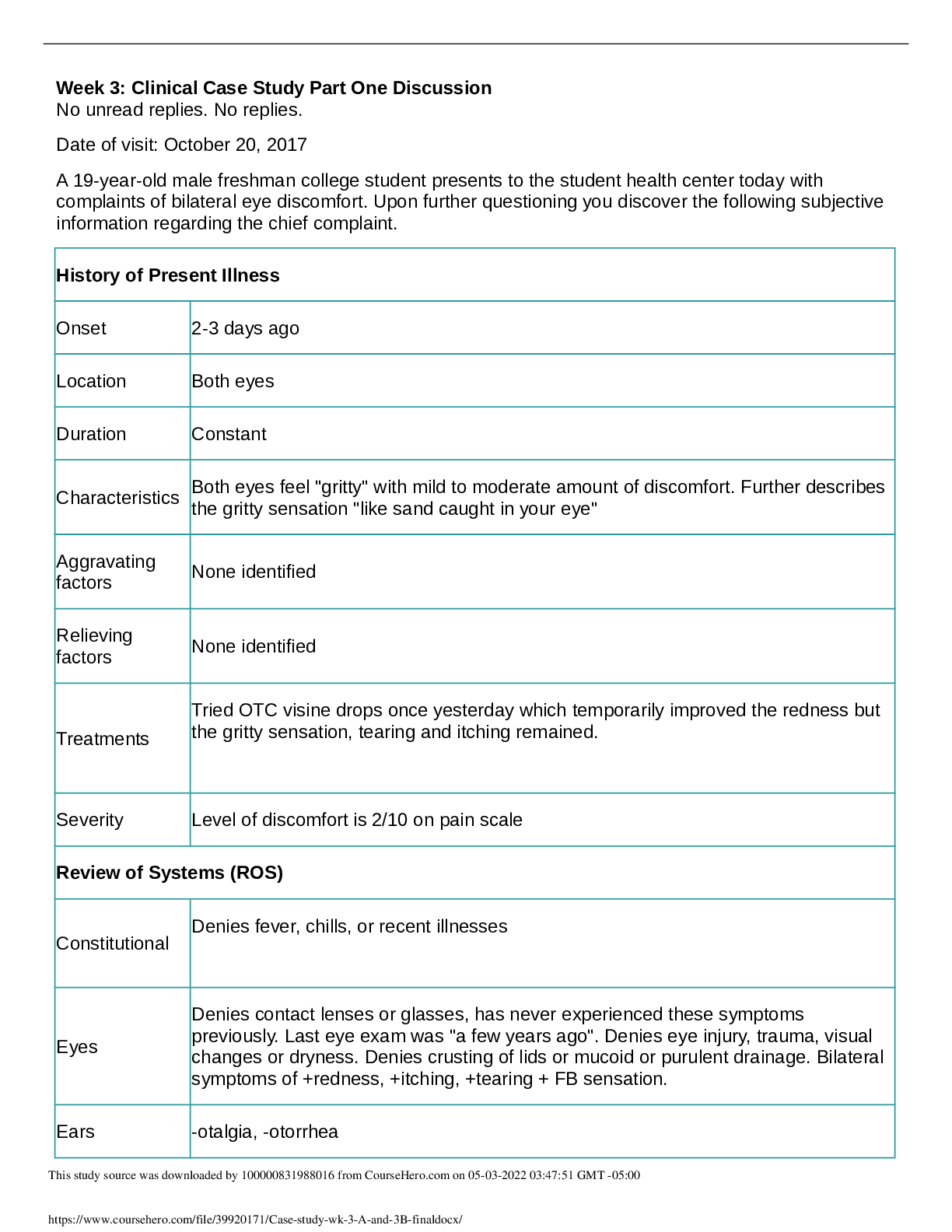

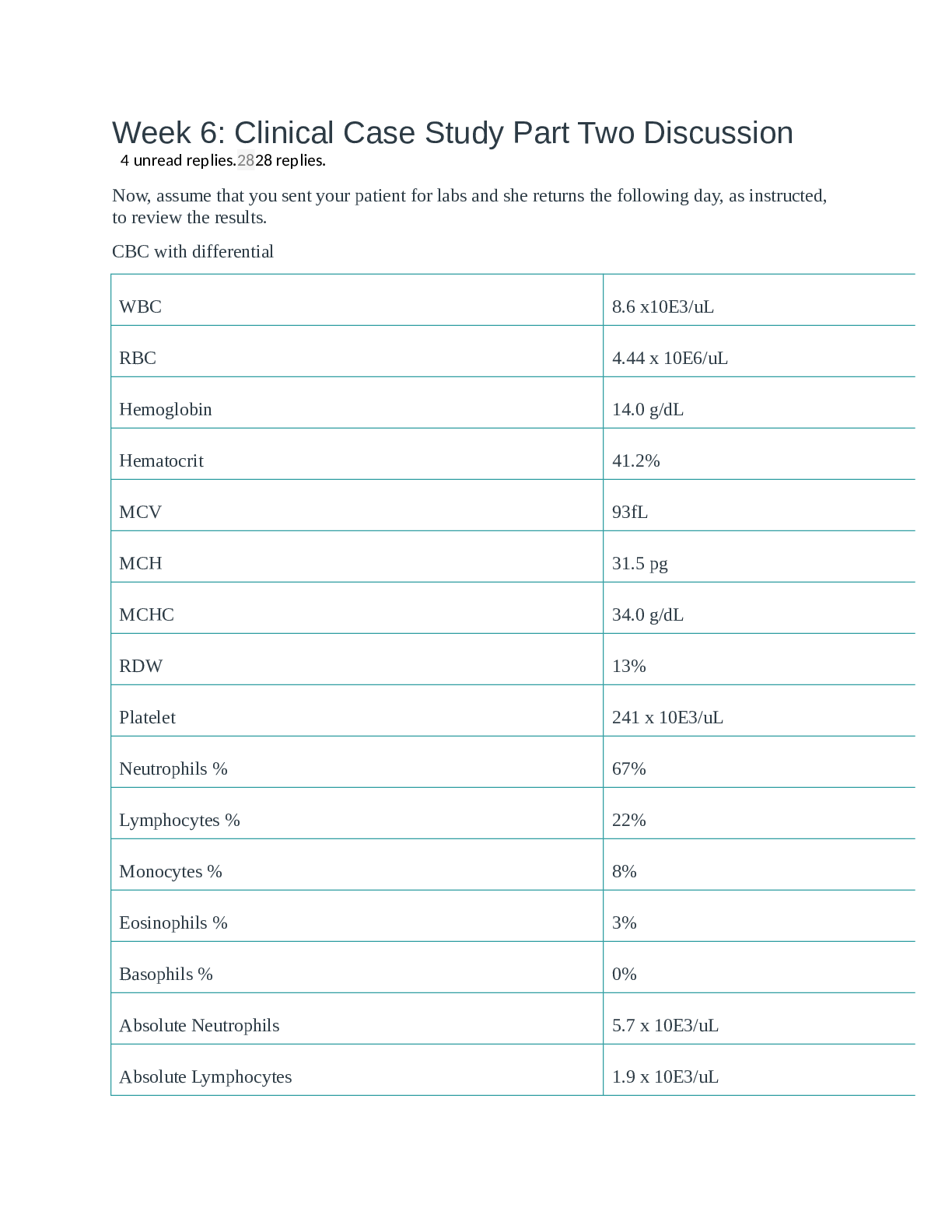

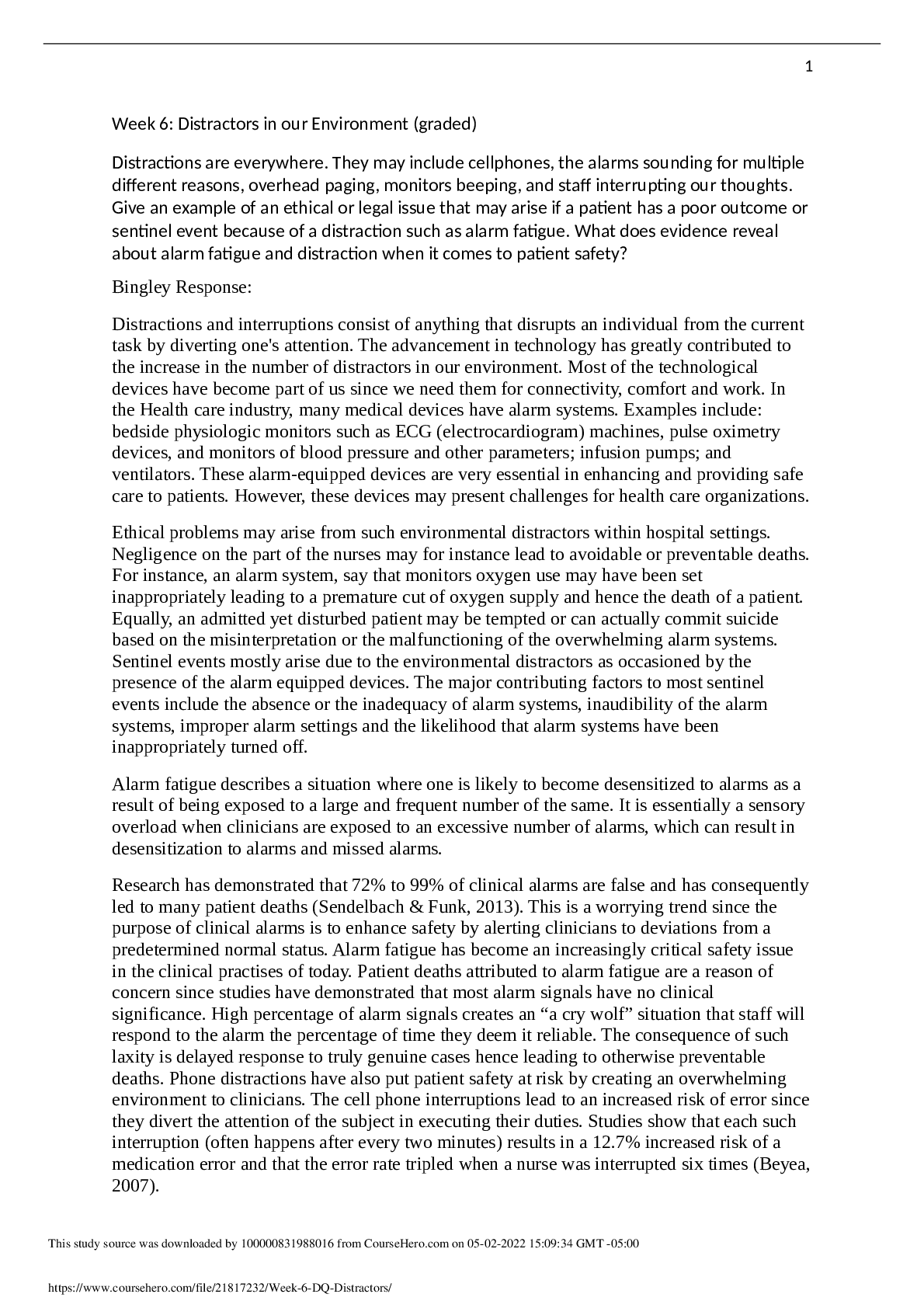




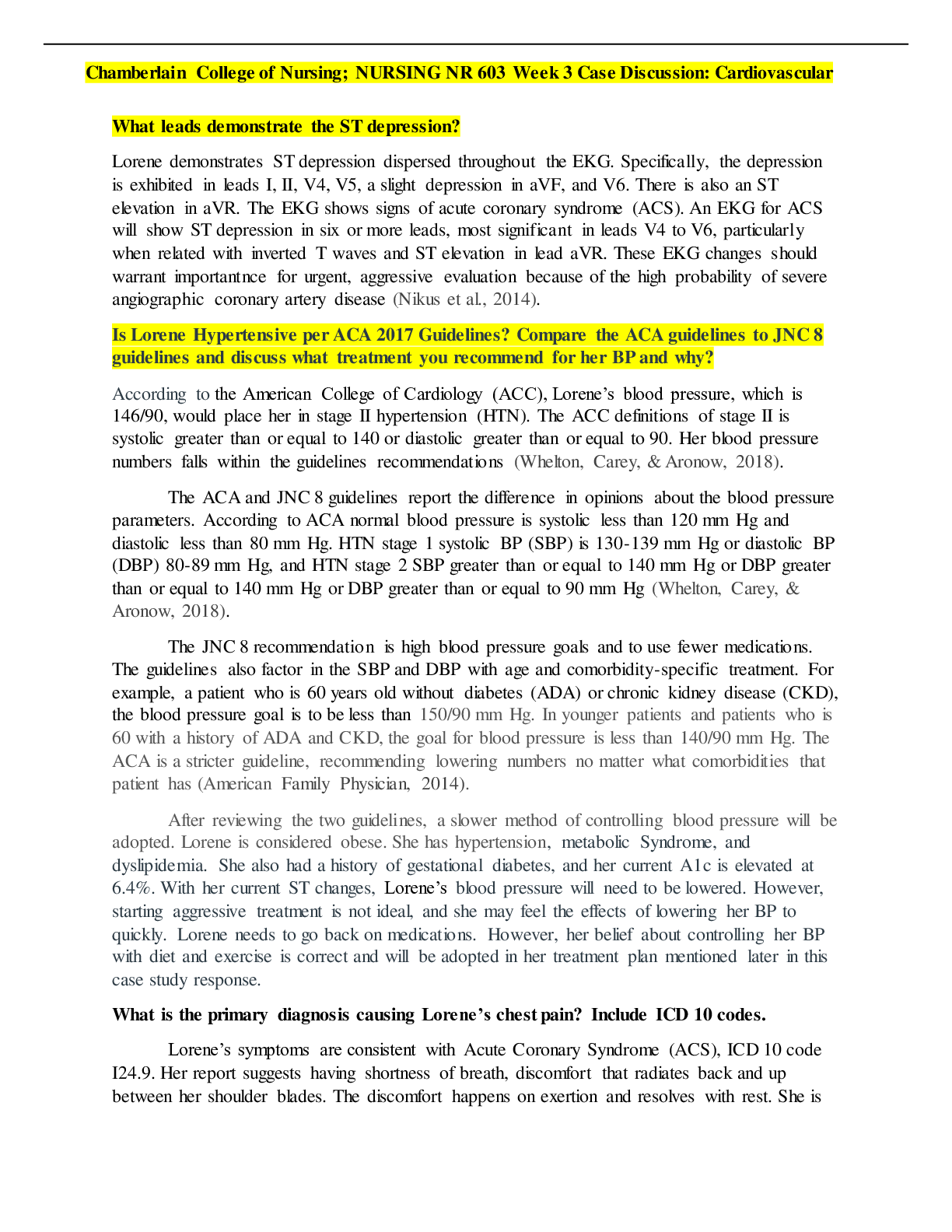

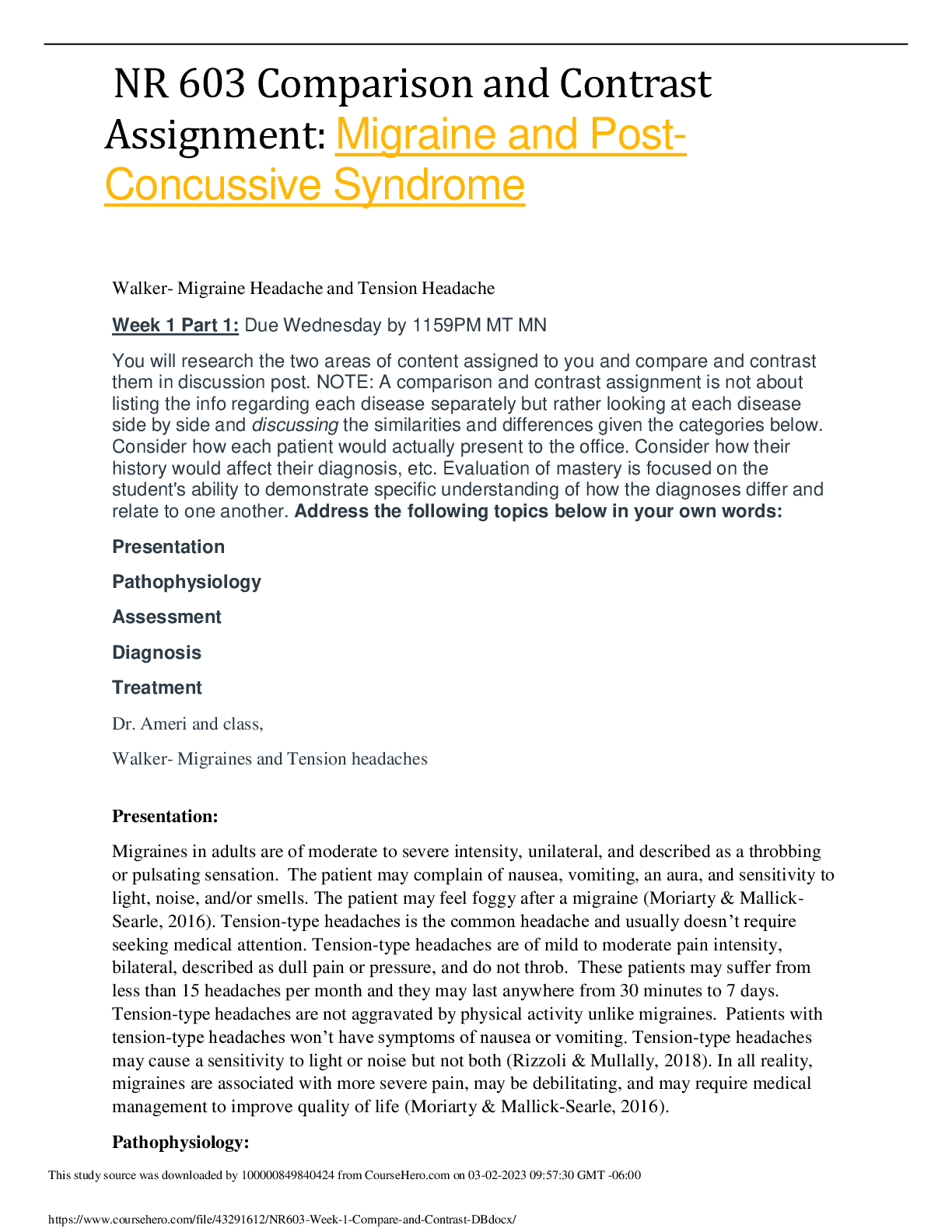

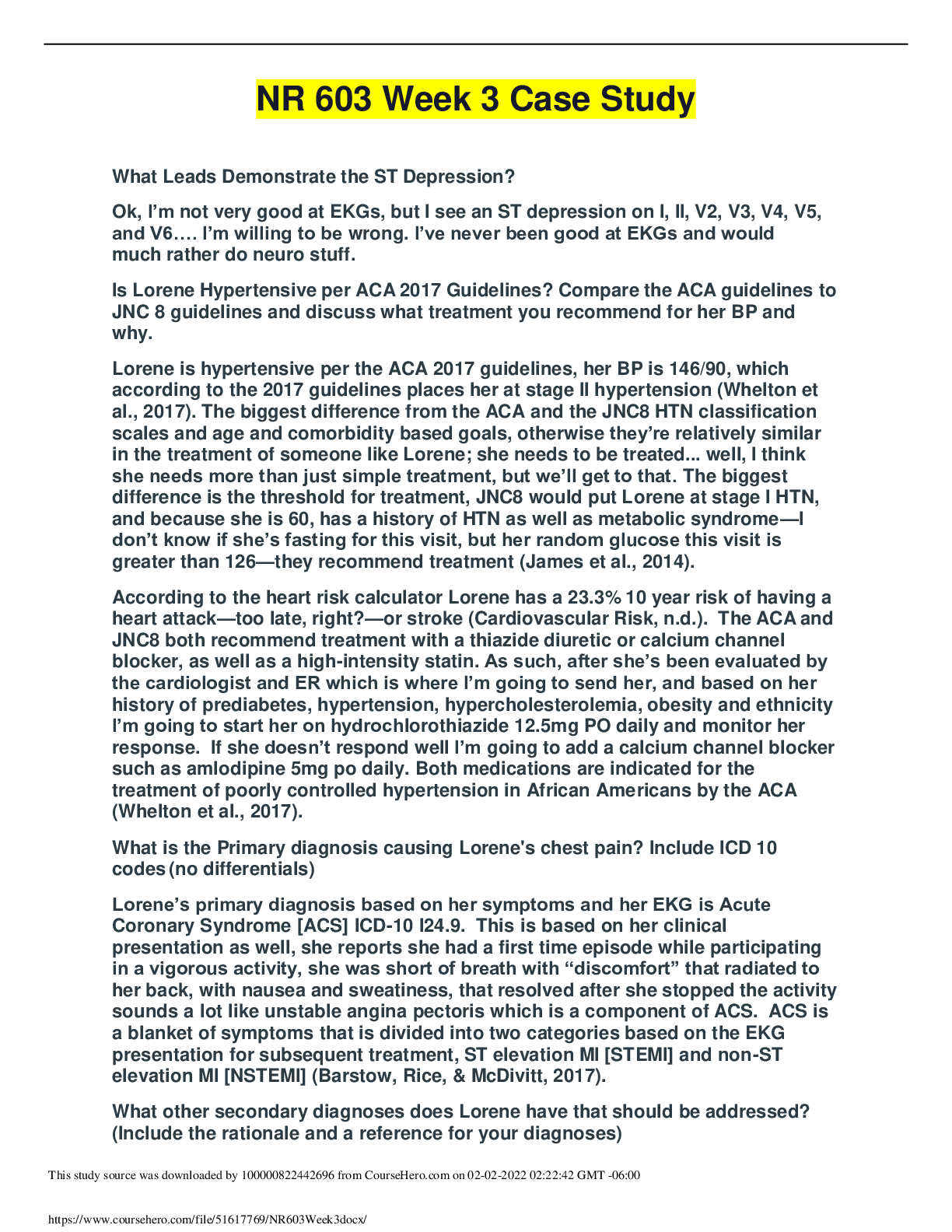
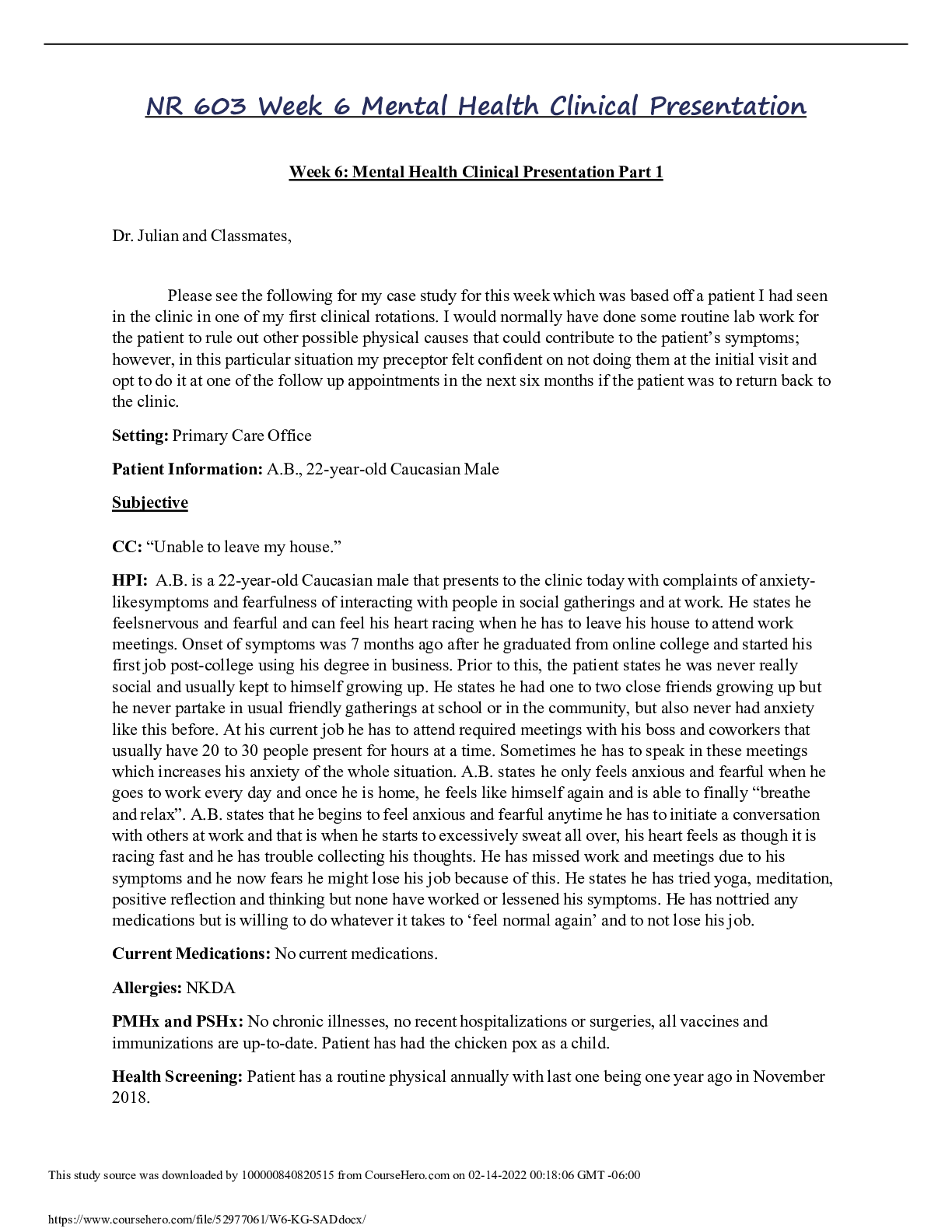
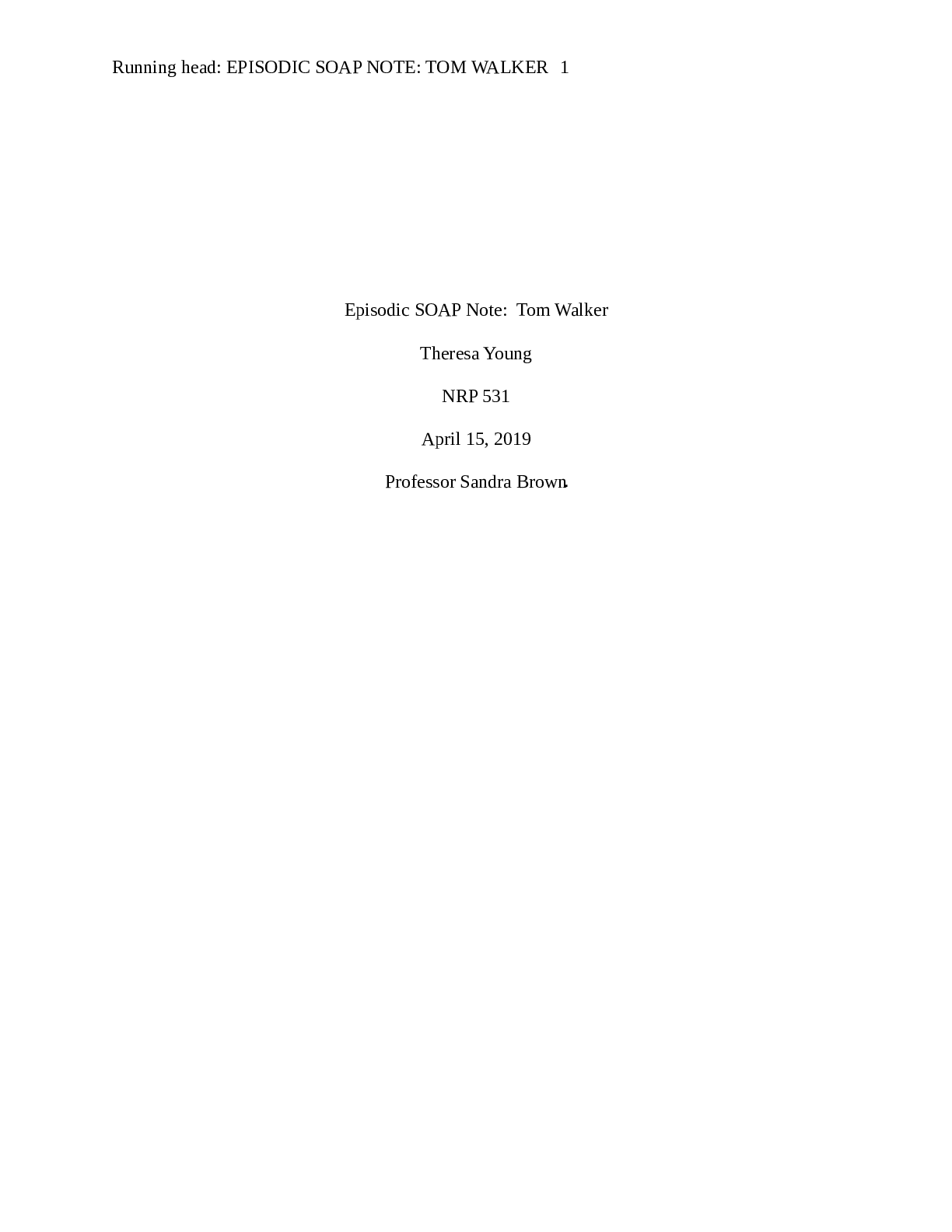

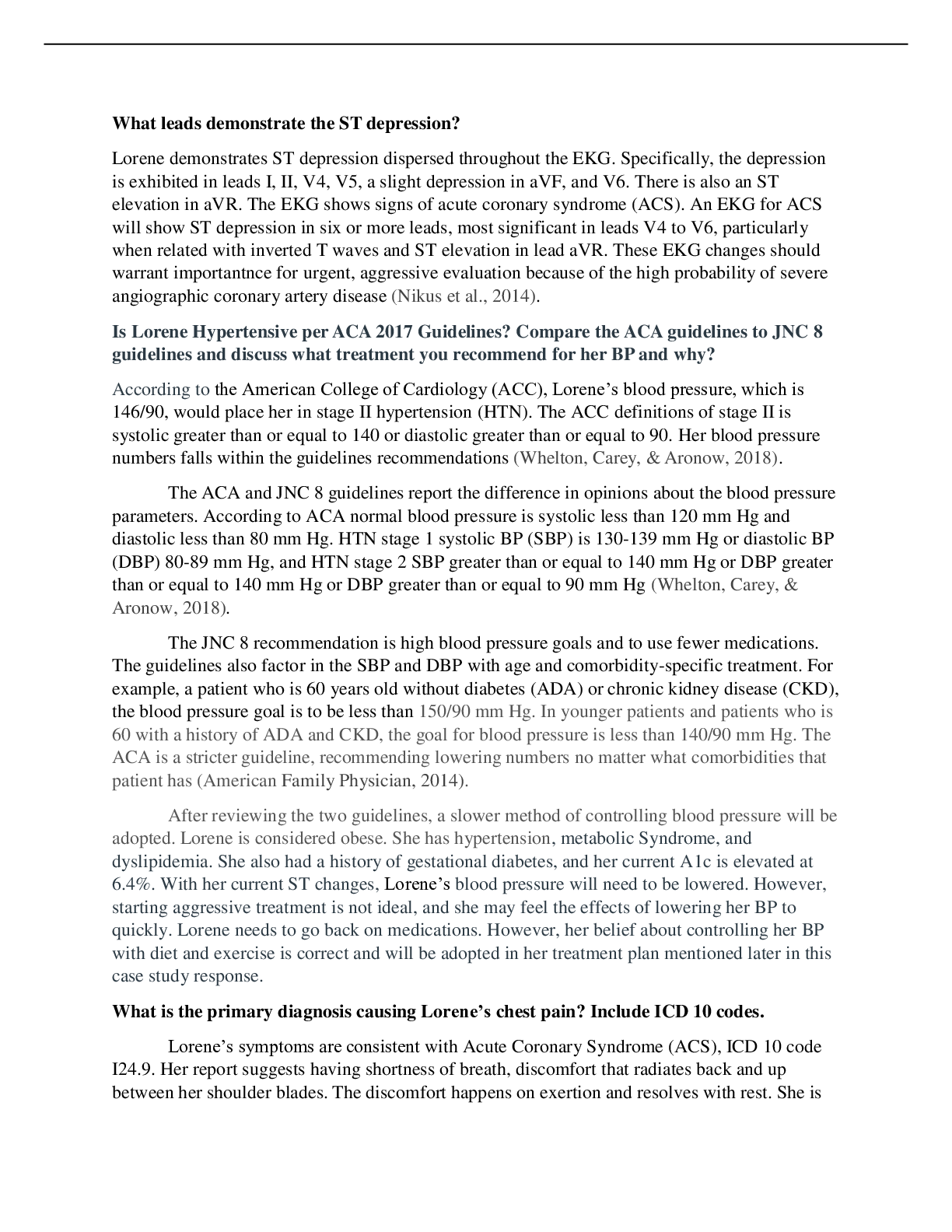

.png)
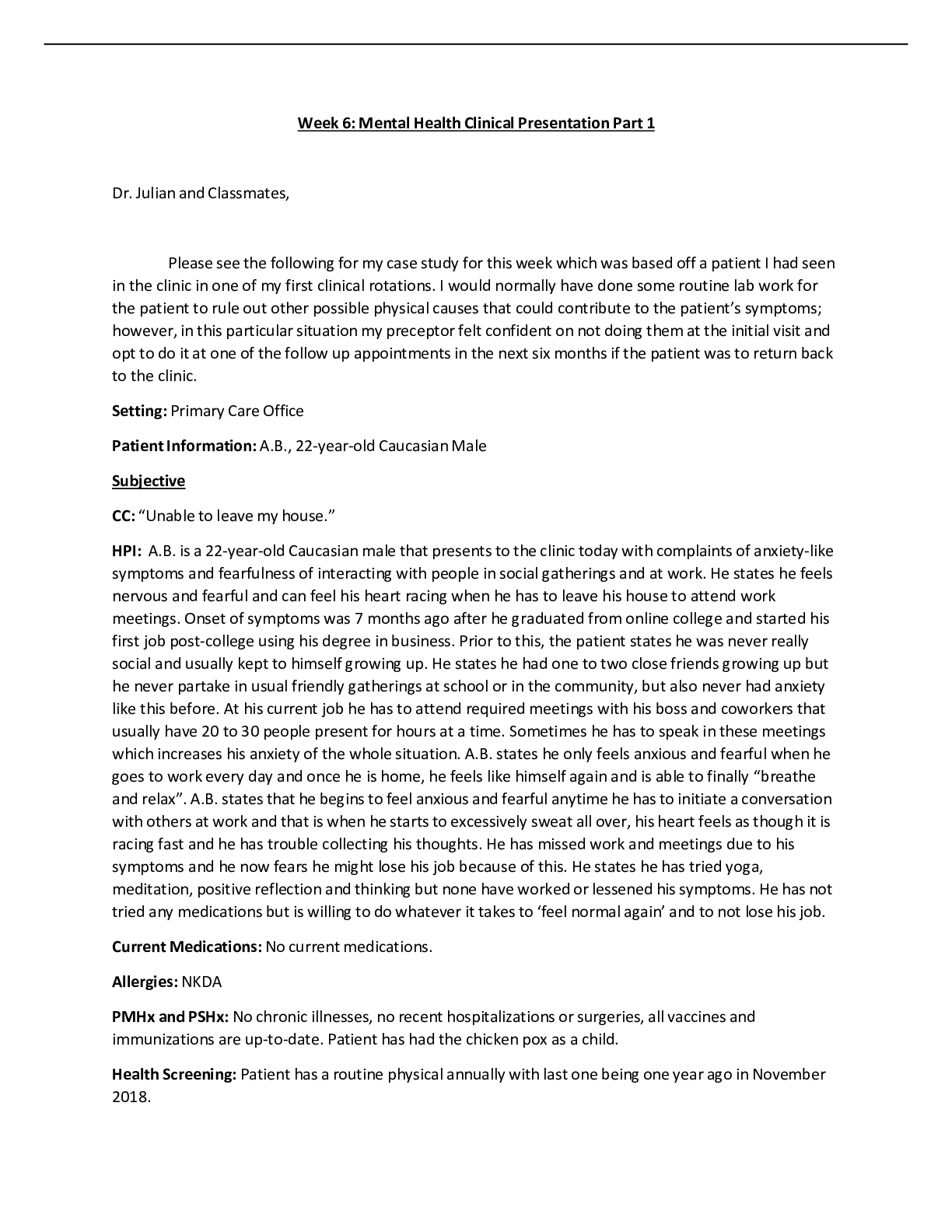
.png)

